'Decent deal': Ohio to buy historic Longworth Hall
- Oops!Something went wrong.Please try again later.
The future of Longworth Hall has long been tied to the future of the Brent Spence Bridge.
With the bridge project now moving forward, Longworth Hall is too – with its owners agreeing to sell to the state of Ohio and the state confirming plans to tear down the easternmost fifth of the building.
Michael Schweitzer, whose father transformed the former railroad warehouse into an office building in the 1980s, signed a letter of intent to sell the iconic Queensgate property Oct. 12.
Assuming the deal goes forward, the Ohio Department of Transportation will pay Schweitzer and his three brothers $25 million for Longworth Hall.
“I think the state got a good deal,” said Schweitzer, the property’s on-site manager. “I think we got a decent deal.”
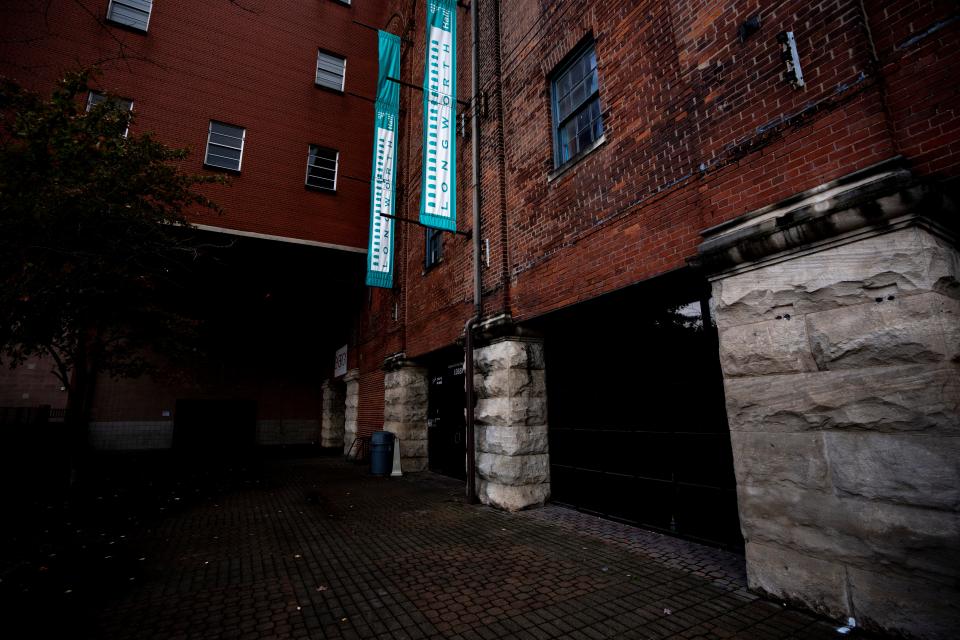
From train freight to office space
Longworth Hall, located at 700 W. Pete Rose Way, was built as a freight warehouse for the Baltimore & Ohio Railroad Co. in 1904.
Then one of the longest buildings in the country, originally just shy of a quarter mile at 1,277 feet, the facility could accommodate up to 125 rail cars at one time.
Construction required 4,000 cubic yards of concrete, 1,200 tons of steel, some 2.5 million feet of lumber and more than 4 million bricks, the Longworth Hall website says.
In 1961, in a precursor to current events, the building lost about 150 feet – later restored – to the construction of Interstate 71/75.
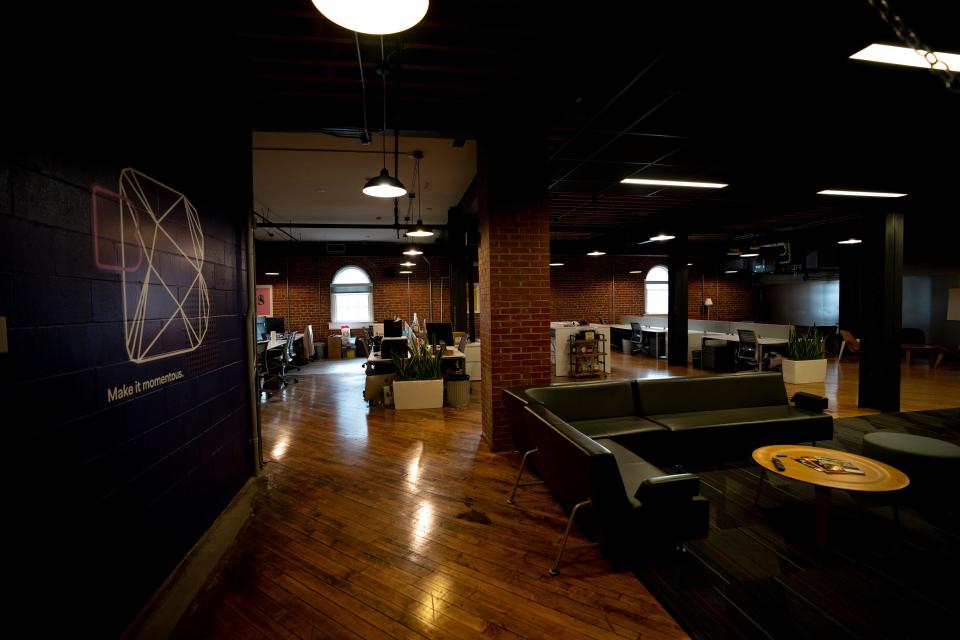
Vacant by the 1980s, the building was purchased by brothers Roy and Ron Schweitzer and local architect Rudy Hermes on Jan. 21, 1985, for $1.5 million. The next year, they placed it on the National Register of Historic Places. Soon after, Roy Schweitzer took sole possession of the property, and poured millions into turning it into commercial space.
Schweitzer named the building for Nicholas Longworth, who owned the land it sits on. The Cincinnati winemaker and real estate investor, born in 1783, had two famous namesakes – a grandson on the Ohio Supreme Court and a great-grandson who served as speaker in the U.S. House of Representatives.
Early Longworth Hall tenants included a nightclub called Eli’s, interior designers, architects and an antique mall. At one point, the property leased spots in its 1,000-car lot, with a shuttle service to Downtown office buildings. The Cincinnati Children’s Museum filled four floors in the west end of the building in 1994, forced out by the 1997 flood. Fabled rock station WOXY-FM, out of business since 2011, operated from Longworth Hall from 2004 to 2009.
Under Michael Schweitzer’s management since the late 1990s, Longworth Hall has mostly been home to creative services firms and an event center.
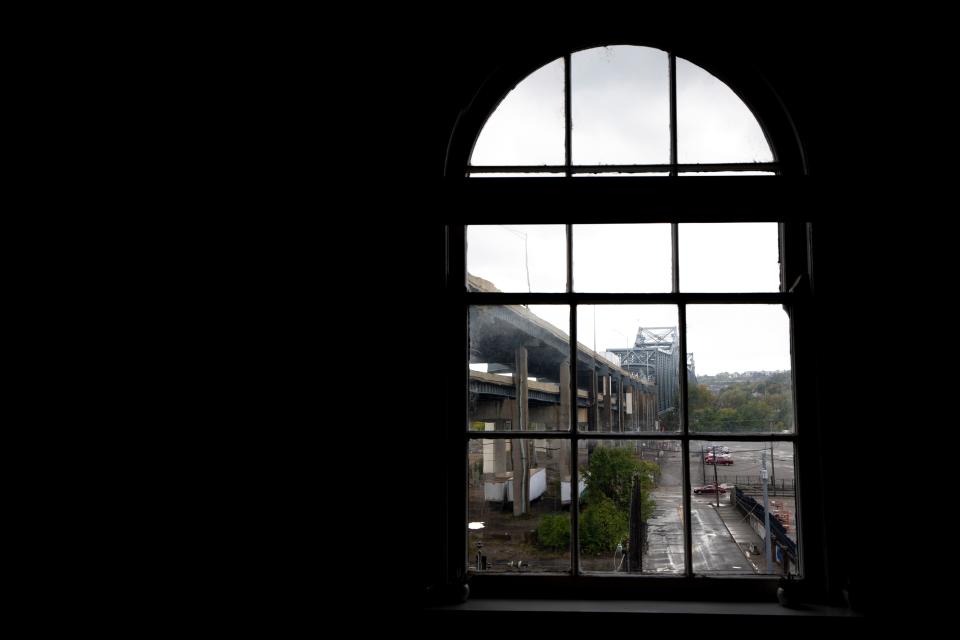
Leasing long a challenge
Continued talk about the needs of the Brent Spence Bridge has not been good for Longworth business.
That’s been going on for 15 or more years, Schweitzer said, as I-71/75 traffic over the bridge has grown and politicians have debated how to address it.
“It’s very difficult to lease a building when every few years people think it’s going to be torn down,” Schweitzer said.
That's not going to happen. Instead, the state plans to remove 210 feet on the east end of the building and rebuild its cap with original bricks in its original design.
Schweitzer thinks construction will dampen demand for (and thus revenue from) Longworth Hall.
He's also not optimistic that current tenants losing their leases will take up his offer to relocate within the building. “I don’t think many will stay,” he said.
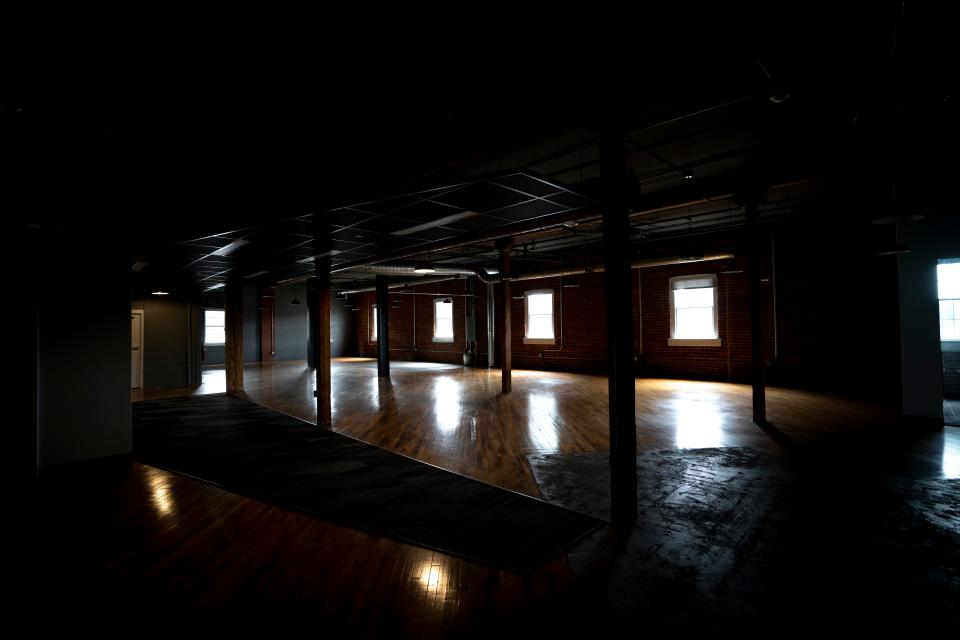
13 tenants told to move by end of the year
Game Day Communications is among the tenants that want to keep a Longworth address.
The media and marketing agency, on site since 2003, likes Longworth’s proximity to Downtown and sports arenas.
Game Day CEO Jackie Reau, who’s visited every U.S. baseball park, also likes Longworth’s kinship with Camden Yards, a Baltimore & Ohio Railroad warehouse of nearly the same length built in 1905. Part of Camden became the home stadium of the Baltimore Orioles in 1992.
She’s talking with Schweitzer and project manager Tom Rolf about moving into new Longworth digs. “I think we’re going to work something out,” she said.
John Ritchie, who operates a photo studio in space that will be torn down, has also told Longworth managers he wants to stay.
“It’s a pretty building,” he said. “It’s treated us well.” Plus, he said, “moving is always a pain.”
None of the other 11 tenants who will be displaced responded to messages seeking comment. They are:
Blacklite Productions, a recording studio.
Barefoot Proximity, a marketing and advertising firm.
Blueboard, an employee rewards firm.
Fisher Design, a brand consultancy.
If We Die We Die recording studio.
Energy nightclub.
Escape Room, a recreation site.
Millimeter Creative Inc., a marketing and branding firm.
Real Equity, a real estate concern.
Trincity Executives Inc., a sales and marketing agency.
Zillow, the real estate listing business that bought local Dotloop operations in 2015.
The Ohio Department of Transportation is offering each as much as $40,000 to cover moving costs and up to $10,000 more for loss of goodwill caused by relocation, according to a letter to tenants obtained by The Enquirer.
"All of the affected tenants have received relocation letters asking them to move before the end of the year," department spokesman Matt Bruning said.
The event space in Longworth, a popular wedding reception venue, will not be impacted by the pending sale of the building, according to the letter of intent Schweitzer signed.
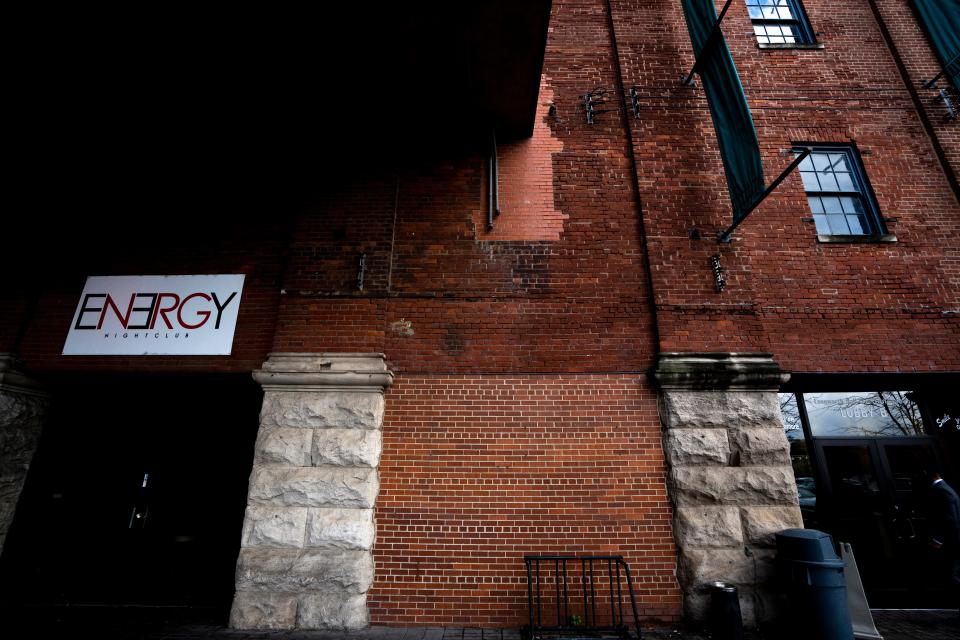
'It's going to be beautiful'
Longworth's current market value is $8.5 million, according to the Hamilton County Auditor. That includes its 8.7-acre lot, valued at about $724,000.
The state's $25 million offer includes the building and land, plus the remnants of a railroad roundhouse on the west end of the lot. That property – which once included scales to weigh freight and six stalls for train engines in need of maintenance – has no current value but the 1.4 acres under it is worth $141,000, according to the county auditor.
Under an agreement with the State Historical Preservation Office, with Cincinnati Preservation Association as a consulting partner, the transportation department will also improve the building – cleaning the brick exterior, repairing damaged mortar, replacing some windows and adding storm windows.
"We are sad that another portion of the building is being removed," said Beth Johnson, the Cincinnati Preservation group's executive director, "but we are happy the rest of the building will get attention."
That pleases Schweitzer as well, as he continues to market Longworth. “It’s going to be a beautiful building when it’s done,” he said.
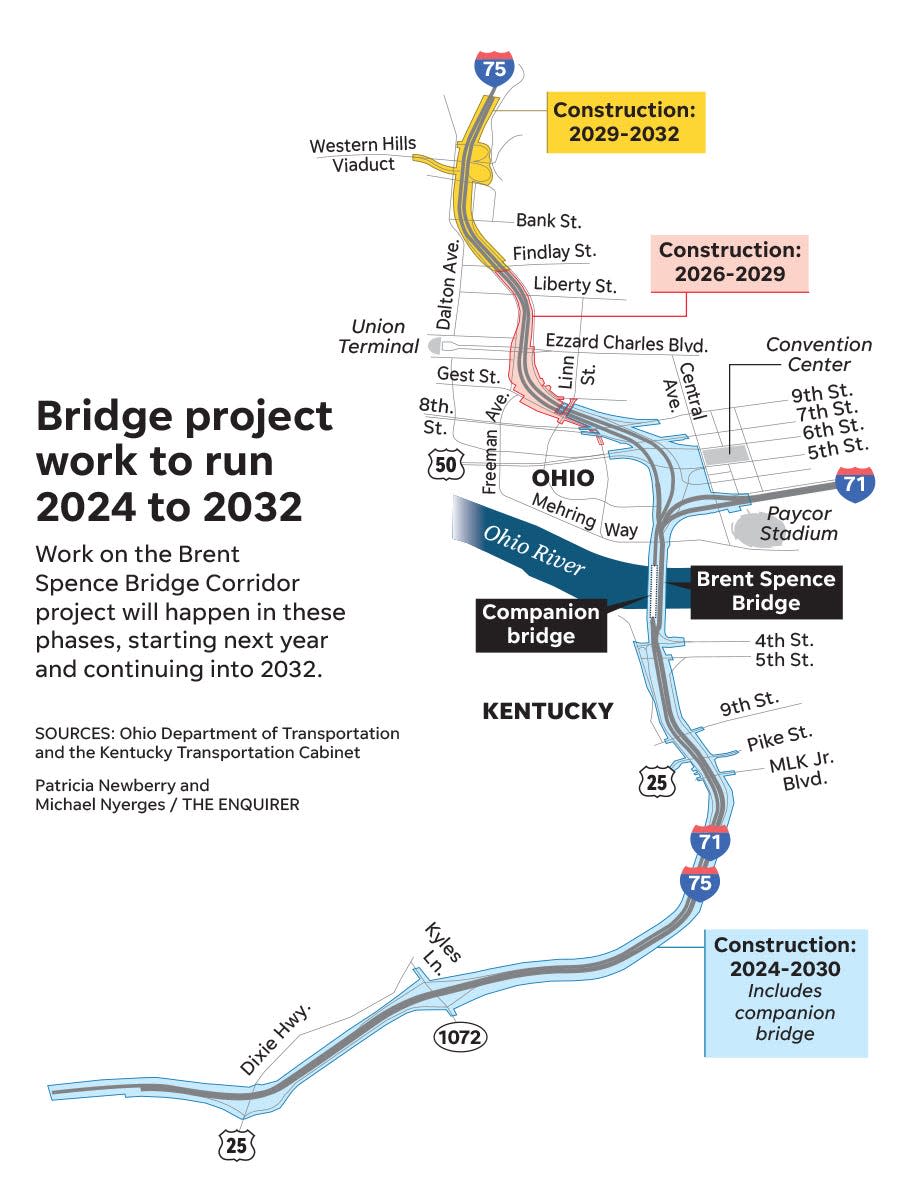
Teardown, rebuild, then new owner
The Ohio Department of Transportation will take ownership of Longworth Hall in about two months, with the option to extend its property inspection another two months. It will manage Longworth through the teardown and rebuild, and then seek a new owner, Bruning said.
Schweitzer said he’s talking to officials about staying on as building manager. He’d also like to continue selling spots in Longworth's lot, at $50 a car, for Bengals tailgating.
The state does not yet know when work on Longworth Hall will start. Officials expect to break ground on the long-planned $3.6 billion project early in 2024, with work continuing into 2032. They need to remove part of Longworth to make room for the new bridge that will be built along the west edge of Brent Spence.
Schweitzer is rueful as he looks to the future. Longworth, he notes, has "been in the family for many, many years.”
In the short term, he's says Longworth Hall is still open for business, with a new tenant arriving soon. Taking space on the third and fourth floors will be Walsh Kokosing, the lead Brent Spence Bridge design team.
This article originally appeared on Cincinnati Enquirer: What's happening with Longworth Hall and the new Ohio River bridge?

